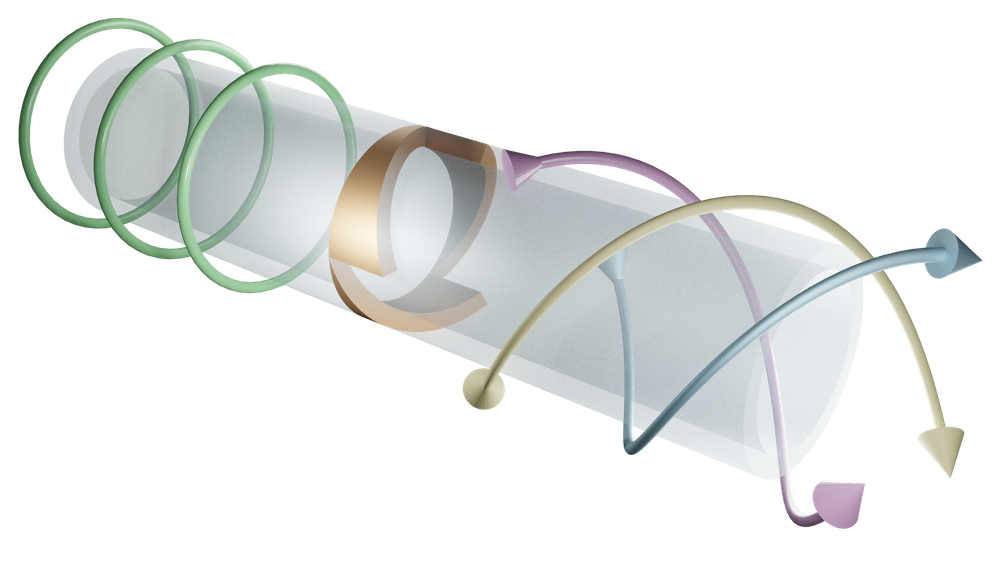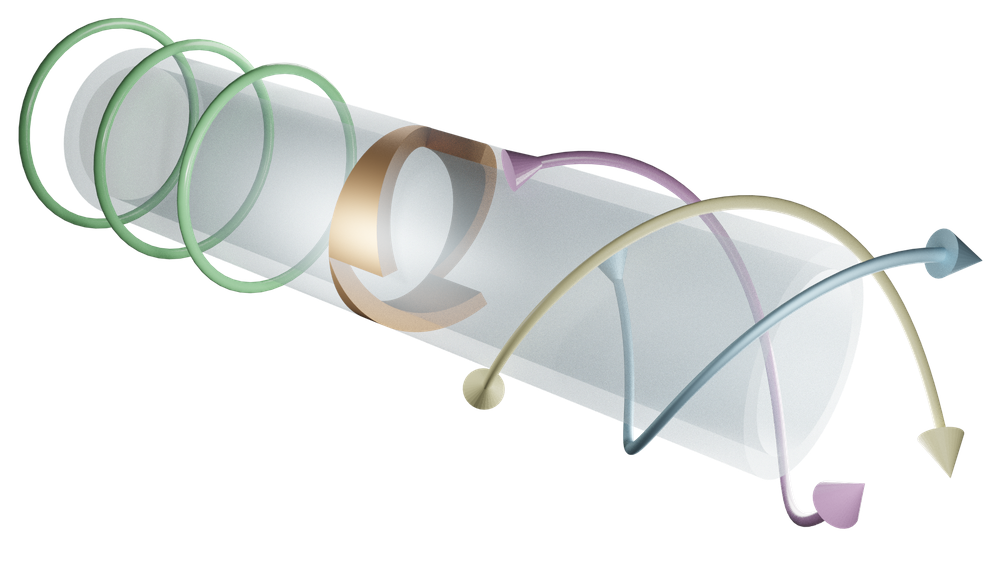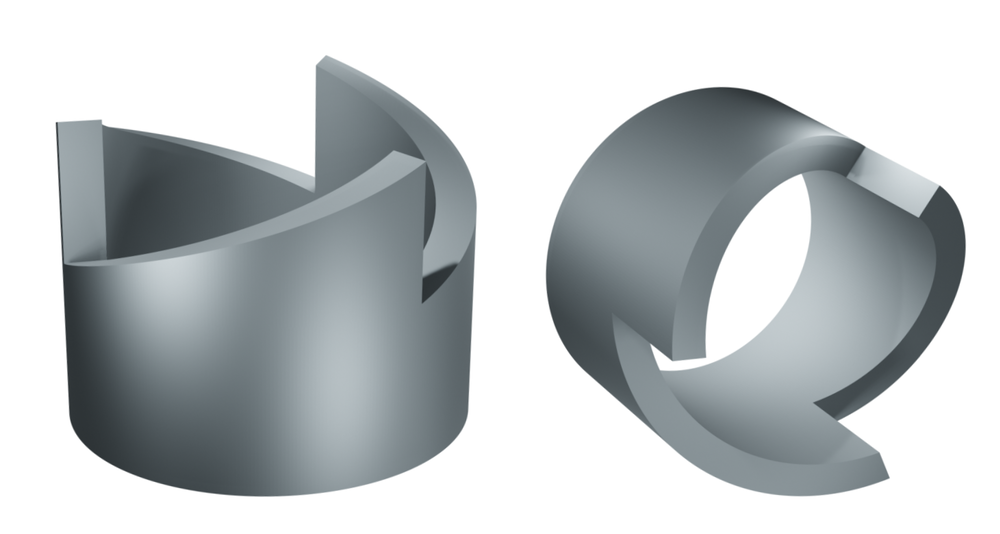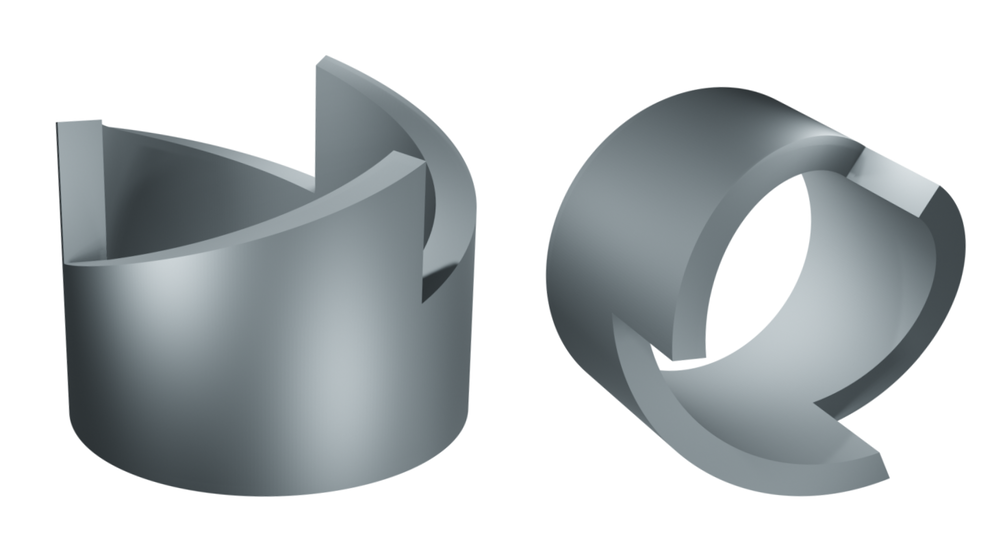Waves in a Solid Imitate Twisted Light
Taking inspiration from light beams with helical wavefronts, researchers have recently generated twisting waves of vibration moving through a solid material. Now the team has shown theoretically that a component of these waves has the same kind of angular momentum as twisting optical waves [1]. The team has also found that such twisting waves moving through the walls of a pipe can controllably excite similarly twisting pressure waves in a fluid. This effect could be used to monitor the properties of fluids or to detect cracks in pipes.
The wavefront of a twisted light beam spirals like a corkscrew. This corkscrew carries so-called orbital angular momentum (OAM), which is rotational momentum around the spiral’s axis. The amount of OAM a beam carries depends on the tightness of the twist. Researchers can adjust this tightness, allowing them to use OAM as a tunable parameter. For example, the tightness might be used to encode information in an optics-based computer.
Jumping on these successes, Gregory Chaplain of the University of Exeter, UK, and his colleagues decided to explore whether OAM can be carried by other waves and potentially used for applications. The team looked at the kind of waves that travel through a solid based on the vibrating motion of the material, so-called elastic waves. Chaplain says that this research direction has been largely neglected. “Other studies have looked at the spin angular momentum of elastic waves,” he says. “To the best of our knowledge, no one else has focused on the—purely classical—orbital angular momentum of elastic waves.”
In experiments with an aluminum pipe, the team recently showed that longitudinal elastic waves, which travel along the pipe and vibrate parallel to the pipe’s axis, can be transformed into flexural waves, which curl around the pipe with helical wavefronts [2]. These waves contain a longitudinal component and a transverse, or shear, component, where the vibrations are perpendicular to the pipe’s axis. The trick for converting longitudinal to flexural waves was to replace a short segment of the pipe by a patterned ring of a different material. One edge of this ring is smooth, while the other edge has curved steps cut into it, so that the boundary with the rest of the pipe is not a circle but a sawtooth pattern. The steps endow the front of an incident wave with a helical profile.
But this previous experimental work didn’t determine whether these waves carry OAM. Now the researchers have analyzed the system theoretically and shown that the longitudinal component of these corkscrew elastic waves carries a well-defined OAM. Next, the team imagined submerging the far end of the pipe into a fluid bath and looked at how these waves transfer to the fluid. Their simulations showed that the elastic waves excite pressure waves that also have helical wavefronts.
“Pressure waves with OAM are an essential part of acoustic tweezers,” Chaplain says. He thinks the method of generating these pressure waves could find use in manipulating submillimeter objects in biological systems. He says that inducing flexural waves in a pipe could also have potential in nondestructively detecting cracks in the pipe that are oriented parallel to the pipe’s axis. Such cracks would interact with the OAM, changing the properties of the waves.
Chaplain and his colleagues have found “a new regime for OAM,” says Miles Padgett, an optical physicist at the University of Glasgow, UK. “This [work] is the first time I have seen anyone consider the mechanical coupling between a solid and a fluid that involves an explicit phase structuring—and certainly the first time that anyone has considered the angular momentum.”
That sentiment is echoed by Eleonora Tubaldi, a mechanical engineer at the University of Maryland who calls the new results “very exciting.” She says that “harnessing the compressional motion in the pipe is a clever strategy to continuously generate spiraling [pressure] waves in the fluid.” Tubaldi thinks that novel microfluidic circuitry and wave-based circulators could be designed to take advantage of the OAM in the fluid.
–Katherine Wright
Katherine Wright is the Deputy Editor of Physics Magazine.
References
- G. J. Chaplain et al., “Elastic orbital angular momentum,” Phys. Rev. Lett. 128, 064301 (2022).
- G. J. Chaplain and J. M. De Ponti, “The elastic spiral phase pipe,” J. Sound Vib. 523, 116718 (2022).







